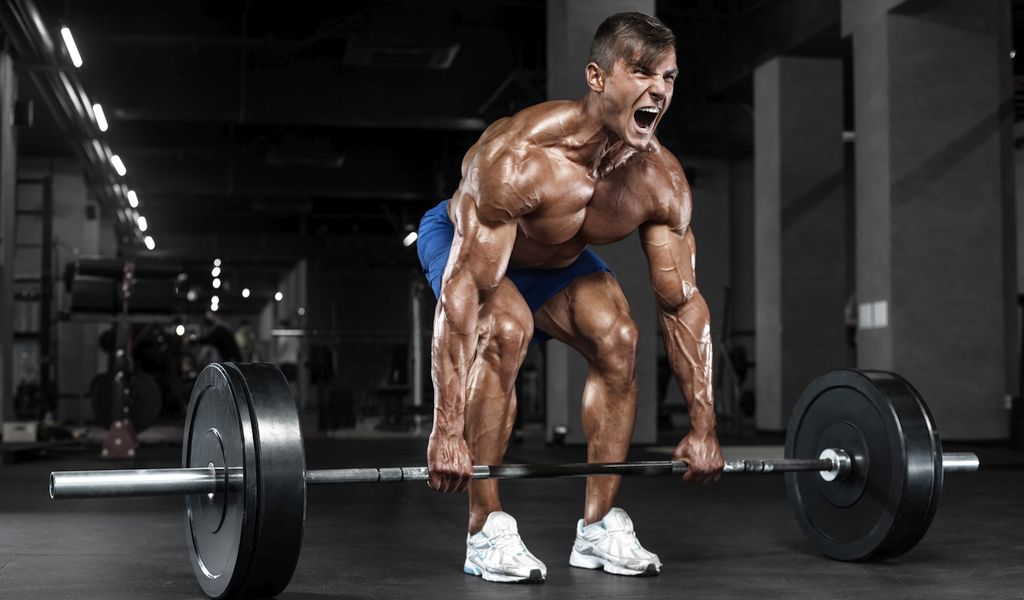Strength Training vs. Hypertrophy
When it comes to resistance training, two primary goals dominate the fitness world: strength training and hypertrophy training. While both involve lifting weights, they have different approaches, rep schemes, and outcomes.
If your goal is to build maximum strength, strength training focuses on increasing your power output and improving your nervous system efficiency. On the other hand, hypertrophy training aims to maximize muscle growth and size.
But which is best for you? This guide will break down the differences, benefits, and how to structure your training depending on your goals.
Understanding Strength Training
What is Strength Training?
Strength training, often associated with powerlifting and Olympic weightlifting, prioritizes increasing maximal force output. It involves lifting heavier loads for fewer repetitions with longer rest periods.
Key Characteristics of Strength Training
- Low Reps, High Load: Typically, strength training utilizes 1-5 reps per set at 85-100% of one-rep max (1RM).
- Longer Rest Periods: Resting 2-5 minutes between sets allows full recovery and maximum effort for each lift.
- Focus on Neuromuscular Efficiency: Strength training improves central nervous system (CNS) adaptation, enabling better muscle fiber recruitment.
- Heavy Compound Lifts: The core of strength training includes exercises such as:
- Squats
- Deadlifts
- Bench Press
- Overhead Press
Benefits of Strength Training
Increases Maximal Strength: Helps improve your ability to lift heavy weights and generate force.
Enhances Athletic Performance: Beneficial for sports requiring explosive power (e.g., football, sprinting, wrestling).
Boosts Joint and Bone Health: Heavy lifting strengthens bones and connective tissues, reducing injury risk.
Improves Nervous System Adaptation: Your CNS learns to recruit more motor units, making your movements more efficient.
Understanding Hypertrophy Training
What is Hypertrophy Training?
Hypertrophy training is designed to maximize muscle size by increasing muscle fiber cross-sectional area. It focuses on moderate reps with moderate weight to induce metabolic stress and muscle damage, both key drivers of muscle growth.
Key Characteristics of Hypertrophy Training
- Moderate Reps, Moderate Load: Typically, hypertrophy training involves 6-12 reps per set at 65-75% of 1RM.
- Shorter Rest Periods: Resting 30-90 seconds between sets keeps muscles under tension longer, leading to greater muscle fatigue and growth.
- Focus on Time Under Tension (TUT): Prolonging the duration of each rep maximizes muscle breakdown and repair.
- Combination of Compound & Isolation Exercises: A hypertrophy workout often includes:
- Bench Press
- Squats
- Deadlifts
- Bicep Curls
- Lateral Raises
Benefits of Hypertrophy Training
Increases Muscle Size: Helps develop a well-defined, muscular physique.
Enhances Muscle Endurance: Higher reps improve muscular endurance for sustained efforts.
Improves Muscle Symmetry and Aesthetics: Isolation exercises target specific muscle groups, shaping the body proportionally.
Boosts Metabolism: More muscle mass increases calorie expenditure, aiding in fat loss.
Strength Training vs. Hypertrophy: Key Differences
| Feature | Strength Training | Hypertrophy Training |
| Primary Goal | Maximal Strength | Muscle Size & Growth |
| Reps per Set | 1-5 | 6-12 |
| Load (% of 1RM) | 85-100% | 65-75% |
| Rest Time | 2-5 minutes | 30-90 seconds |
| Exercise Selection | Heavy Compound Lifts | Compound & Isolation |
| Muscle Fiber Recruitment | Type II (Fast Twitch) | Type I & II (Mixed) |
Which Training Style is Best for You?
Choose Strength Training If:
- Your goal is to lift heavier weights and increase raw strength.
- You participate in sports that require explosive power.
- You want to build denser, functional muscle mass.
- You prefer lower rep ranges and longer recovery between sets.
Choose Hypertrophy Training If:
- Your goal is to develop larger, more aesthetic muscles.
- You enjoy moderate rep ranges with controlled form and tempo.
- You want a balanced mix of compound and isolation movements.
- You prefer a pump-focused training style with shorter rest times.
Can You Combine Strength & Hypertrophy Training?
Yes! Many successful training programs integrate both styles for optimal results. A periodized approach allows lifters to cycle between phases of strength and hypertrophy training, ensuring continued progress.
How to Combine Strength & Hypertrophy Training
Strength-Focused Phases: Spend 4-6 weeks focusing on low reps and heavy loads, then switch to a hypertrophy phase.
Daily Undulating Periodization (DUP): Alternate strength and hyper-trophy-focused sessions throughout the week.
Hybrid Workouts: Start workouts with heavy compound lifts (strength), followed by hypertrophy-focused accessory work.
Example Hybrid Training Split
Day 1: Upper Body Strength & Hypertrophy
- Bench Press – 4×4 (Strength)
- Pull-Ups – 4×6 (Strength)
- Dumbbell Shoulder Press – 3×10 (Hypertrophy)
- Bicep Curls – 3×12 (Hypertrophy)
Day 2: Lower Body Strength & Hypertrophy
- Squats – 4×3 (Strength)
- Romanian Deadlifts – 3×6 (Strength)
- Leg Press – 3×10 (Hyper-trophy)
- Calf Raises – 3×12 (Hyper-trophy)
Both strength training and hypertrophy training have their unique benefits, and choosing the right approach depends on your fitness goals. If your priority is to lift heavier and gain raw strength, strength training is your best bet. If you’re aiming for muscle size and definition, hypertrophy training will serve you better.
For the best of both worlds, consider a hybrid approach, incorporating both styles strategically into your program. Regardless of your choice, progressive overload, proper nutrition, and recovery remain the keys to success.
Ready to take your training to the next level? Pick your goal and start training today!








